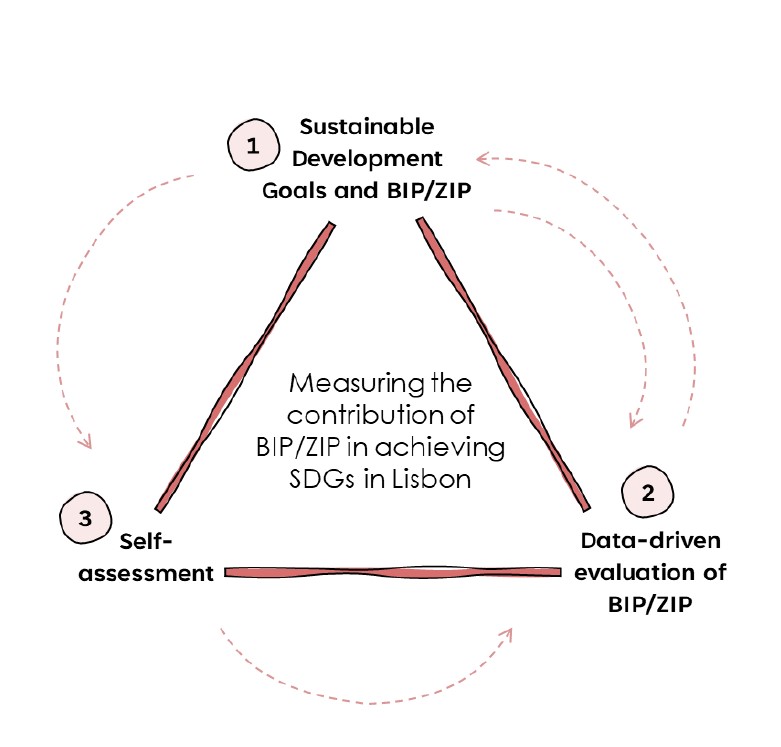Pappa, A., & Paio, A. (2023, October). The role of commons-oriented policies in the transformation of urban governance: The case of the participatory budget BIP/ZIP in Lisbon [Poster Presentation]. In 2nd Conference on Participatory Design. Transforming the City: Public Space & Environment, Inequalities & Democracy. Athens, Greece.
https://en.participatorylab.org/conference2023
Posted on 17-04-2025
This research focuses on the role of commons-oriented local strategies in urban regeneration, in transforming the urban governance through enabling local organisations and community groups, especially the most disadvantaged, to participate in local decision-making processes. The research is situated in Lisbon and the participatory budget program of BIP/ZIP.
Urban commons are urban resources, such as public spaces that are managed by their users in a non-profit oriented way following principles of direct democracy. They are mostly bottom-up yet are increasingly integrated in local strategies that promote collective management of resources through multi-stakeholder governance structures, such as the quintuple helix. PB is such a commons-oriented tool that facilitates collective decision-making on the allocation of public resources, be it funding or/and spaces also prioritizing disadvantaged groups.
The BIP/ZIP participatory budget aims to foster socio-territorial cohesion in Lisbon by integrating 67 ‘priority’ neighbourhoods. It promotes active citizenship through the establishment of partnerships among parish councils, citizens, local associations and NGOs that propose territorial interventions through concrete local actions3. Since 2010, the program has funded 416 projects with an implementation grant of up to 50K EUR/project, involving thousands of different partner entities.
The study employs a data-driven analysis to investigate the matrix of local partnerships formulated through BIP/ZIP (2011-2021) and their dynamic role in the transformation of the urban governance in the city of Lisbon. commonsd
Related vocabulary
Public-civic Partnership
Urban Commons
Area: Community participation
Created on 08-11-2023
Read more ->Area: Community participation
Created on 14-10-2022
Read more ->Blogposts

Participatory budgets and Sustainable Development Goals
Posted on 29-10-2022
Secondments
Read more ->

